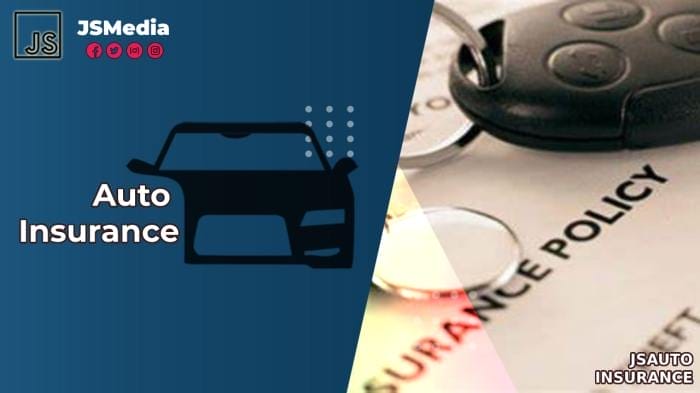As a parent, adding a teenage driver to your auto insurance policy can be a daunting task. With the increased risk of accidents and the potential for higher insurance rates, it’s essential to navigate this transition carefully. This guide provides valuable tips and insights to help you understand the process, compare insurance policies, choose the right coverage options, and encourage safe driving habits in your teenage driver.
From understanding the legal requirements and financial implications to exploring discounts and savings opportunities, this comprehensive guide covers all aspects of adding a teenage driver to your auto insurance policy. By following these tips and recommendations, you can ensure adequate coverage, promote safe driving, and potentially reduce insurance costs.
The Importance of Adding a Teenage Driver
Including a teenage driver on your auto insurance policy is a crucial step to ensure their safety and your financial protection. Let’s delve into the legal requirements, financial implications, and potential impact on your insurance rates.
Legal Requirements
Most states mandate that all drivers, including teenagers, be covered by auto insurance. Adding a teenage driver to your policy ensures compliance with these legal obligations and safeguards you from potential liabilities in the event of an accident.
Financial Implications
Adding a teenage driver can significantly affect your insurance premiums. Statistical data reveals that teenage drivers pose a higher risk on the road, leading to increased claims and payouts by insurance companies. Consequently, insurers often charge higher rates to cover teenage drivers.
The extent of the increase in your insurance rates will depend on various factors, including the teenager’s age, driving record, and the type of vehicle they will be operating. Generally, younger teenage drivers with less experience behind the wheel tend to attract higher premiums.
Impact on Insurance Rates
The addition of a teenage driver to your insurance policy can result in a substantial increase in your premiums. On average, parents can expect to pay anywhere from 20% to 100% more for their insurance coverage.
For instance, if your current premium is $1,000 per year, adding a teenage driver could increase it by $200 to $1,000, depending on the factors mentioned above. This increase can be a significant financial burden for families with limited budgets.
Researching and Comparing Insurance Policies

When adding a teenage driver to your auto insurance policy, it’s essential to research and compare different policies to find the best coverage and rates.Start by gathering quotes from multiple insurance companies. Be sure to provide accurate information about your teen driver, including their age, driving experience, and vehicle.
Also, inquire about any discounts or special programs available for teenage drivers.Once you have a few quotes, compare them carefully. Consider the following factors:
Coverage:
Make sure the policy provides adequate coverage for your teen driver and your vehicle. Consider the liability limits, collision and comprehensive coverage, and any other coverage options that may be important to you.
Cost:
Compare the premiums of different policies to find the best rate. Keep in mind that the cost of insurance for a teenage driver can be higher than for an experienced driver.
Deductible:
The deductible is the amount you pay out of pocket before the insurance company starts to cover the costs. Choose a deductible that you can afford to pay in case of an accident.
Customer Service:
Consider the reputation of the insurance company and the quality of their customer service. Read reviews online or talk to friends and family about their experiences with different insurance companies.
Additional Factors:
In addition to the factors mentioned above, you may also want to consider the following:
- Any additional discounts or benefits offered by the insurance company, such as accident forgiveness or roadside assistance.
- The financial stability of the insurance company.
- The claims process of the insurance company.
By carefully researching and comparing different insurance policies, you can find the best coverage and rates for your teenage driver.
Understanding Coverage Options

Navigating the insurance landscape for teenage drivers requires a comprehensive understanding of the available coverage options. This knowledge empowers you to make informed decisions, ensuring your teen’s protection on the road.Coverage options for teenage drivers encompass a spectrum of protections, each tailored to specific scenarios.
Liability coverage stands as the cornerstone, safeguarding you against financial liability in case your teen causes an accident, resulting in property damage or bodily injury to others. Collision coverage extends this protection to your vehicle, covering repairs or replacements in the event of a collision, regardless of fault.
Comprehensive coverage offers a broader shield, encompassing non-collision-related incidents like theft, vandalism, natural disasters, and animal collisions.
Liability Coverage
Liability coverage assumes paramount importance, acting as a safety net against potential legal and financial repercussions arising from accidents caused by your teenage driver. It comprises two essential components:
- Bodily Injury Liability: This coverage safeguards you from expenses related to injuries sustained by others involved in an accident caused by your teen. It covers medical bills, lost wages, and pain and suffering.
- Property Damage Liability: This coverage shields you from financial liability for damages caused to someone else’s property, such as vehicles, buildings, or fences, resulting from an accident caused by your teen.
Collision Coverage
Collision coverage functions as a safety net for your vehicle, providing financial protection in case of a collision with another vehicle or object. It covers repairs or replacements, irrespective of who is at fault. Collision coverage is particularly crucial for teenage drivers, given their higher likelihood of being involved in accidents due to limited experience and judgment.
Comprehensive Coverage
Comprehensive coverage extends beyond collision-related incidents, offering protection against a wider range of perils that may befall your vehicle. These include:
- Theft: This coverage reimburses you for the vehicle’s value in case it is stolen.
- Vandalism: This coverage covers repairs or replacements for damages caused to your vehicle by malicious acts.
- Natural Disasters: This coverage provides protection against damages caused by natural calamities like floods, hurricanes, and earthquakes.
- Animal Collisions: This coverage reimburses you for repairs or replacements resulting from collisions with animals.
Setting Limits and Deductibles

Determining appropriate liability limits and deductibles for a teenage driver’s insurance policy is crucial to balance coverage needs and affordability. Liability limits define the maximum amount the insurance company will pay for damages caused to others in an accident, while deductibles represent the out-of-pocket expense a policyholder must pay before the insurance coverage kicks in.
Understanding Liability Limits
Liability limits are typically expressed in three numbers, such as 100/300/50. The first number represents the maximum amount the insurance company will pay for bodily injury to one person, the second number is the maximum for bodily injury to all persons in a single accident, and the third number is the maximum for property damage.
Setting Liability Limits
When setting liability limits, consider factors such as the value of your assets, your financial situation, and the potential risks associated with your teenage driver. Higher liability limits provide more protection in case of a serious accident, but they also come with higher premiums.
Understanding Deductibles
A deductible is the amount you pay out of pocket before your insurance coverage begins. Deductibles can range from a few hundred dollars to several thousand dollars.
Setting Deductibles
When setting deductibles, consider your budget and risk tolerance. A higher deductible will result in lower premiums, but it also means you’ll have to pay more out of pocket if you file a claim.
Balancing Coverage and Affordability
Finding the right balance between coverage and affordability is crucial. It’s important to have adequate liability limits to protect yourself financially in case of an accident, but you also need to consider the cost of premiums and deductibles.
Consequences of High or Low Limits and Deductibles
Choosing high limits and low deductibles will provide more comprehensive coverage but will also result in higher premiums. Conversely, choosing low limits and high deductibles will lower premiums but provide less coverage. It’s essential to weigh the pros and cons carefully and make a decision that suits your specific needs and budget.
Discounts and Savings Opportunities
Insurance companies offer various discounts and savings opportunities to teenage drivers and their parents to help make auto insurance more affordable. Understanding and utilizing these discounts can significantly reduce insurance premiums.
To be eligible for discounts, teenage drivers typically need to meet certain requirements and criteria. These may include maintaining good grades, taking a driver’s education course, or enrolling in a usage-based insurance program.
Good Student Discount
- Description: Many insurance companies offer discounts to teenage drivers who maintain a certain GPA or rank in their class.
- Requirements: Typically requires proof of good grades, such as a report card or transcript.
- Potential Savings: The amount of the discount varies by insurance company, but it can range from 5% to 25%.
Driver’s Education Discount
- Description: This discount is available to teenage drivers who successfully complete a driver’s education course approved by their state.
- Requirements: Proof of completion of a driver’s education course is required.
- Potential Savings: The discount amount varies by insurance company, but it can range from 5% to 15%.
Usage-Based Insurance (UBI) Discount
- Description: UBI programs monitor a teenage driver’s driving habits, such as speed, braking, and mileage, and provide discounts for safe driving.
- Requirements: Requires installation of a telematics device in the vehicle to track driving behavior.
- Potential Savings: Discounts can vary based on driving habits, but some UBI programs offer discounts of up to 30%.
Multi-Car Discount
- Description: This discount is available to parents who insure multiple vehicles with the same insurance company.
- Requirements: Requires insuring at least two vehicles with the same insurance company.
- Potential Savings: The discount amount varies by insurance company, but it can range from 5% to 15% per vehicle.
Loyalty Discount
- Description: Some insurance companies offer discounts to customers who remain with them for a certain period of time, typically three to five years.
- Requirements: Requires continuous insurance coverage with the same insurance company for the specified period.
- Potential Savings: The discount amount varies by insurance company, but it can range from 5% to 10%.
Monitoring Driving Habits

When a teenage driver is added to your auto insurance policy, it’s essential to monitor their driving habits closely. This is a critical step in ensuring their safety, as well as protecting yourself financially in the event of an accident.
There are several ways to monitor a teenage driver’s driving habits. One is to set rules and expectations for them. This includes discussing safe driving practices, such as obeying speed limits, avoiding distractions, and wearing a seatbelt. It’s also important to set limits on their driving, such as when and where they can drive.
Using Telematics Devices
Another way to monitor a teenage driver’s driving habits is to use telematics devices. These devices are installed in the car and track driving behavior, such as speed, braking, and acceleration. They can also provide information about the location of the car and how often it is driven.
Telematics devices can be a valuable tool for parents who want to keep track of their teenage driver’s driving habits and encourage safe driving.
Encouraging Safe\u0100

Fostering safe driving habits in young drivers is crucial for their safety and the well-being of others on the road. Here are some tips for encouraging safe driving habits:
- Set a Good Example: Parents and guardians should model safe driving behaviors, as young drivers often emulate the driving habits they observe.
- Educate and Communicate: Discuss the importance of safe driving, the consequences of reckless behavior, and the benefits of responsible driving.
- Enforce Rules and Consequences: Establish clear rules and expectations for driving, including adherence to speed limits, avoiding distractions, and wearing seat belts.
- Set Curfew and Limits: Impose reasonable restrictions on driving hours and areas, especially during high-risk periods like late nights or weekends.
- Monitor Driving Habits: Keep track of your young driver’s driving behavior by reviewing their driving history, GPS tracking, or dashcam footage.
- Provide Positive Reinforcement: Praise and reward your young driver for safe driving practices, such as obeying traffic laws and demonstrating responsible behavior.
Consequences of Reckless Driving
Reckless or negligent driving can have severe consequences, including:
- Accidents and Injuries: Reckless driving increases the risk of accidents, leading to injuries or even fatalities for the driver and others.
- Legal Penalties: Traffic violations can result in fines, license suspension or even imprisonment, depending on the severity of the offense.
- Insurance Premiums: Insurance companies may increase premiums for drivers with a history of reckless driving, making auto insurance more expensive.
- Employment and Education: A driving record with reckless driving convictions can affect job opportunities and educational prospects.
- Social Stigma: Reckless driving can lead to social disapproval and damage to one’s reputation.
Safe Driving and Lower Insurance Rates
Safe driving habits can lead to lower insurance rates in several ways:
- Fewer Claims: Drivers with clean driving records are less likely to file claims, reducing the insurer’s risk and potentially leading to lower premiums.
- Accident Avoidance: Safe driving practices help prevent accidents, which means fewer claims and lower costs for the insurance company.
- Defensive Driving Discounts: Many insurance companies offer discounts for drivers who complete defensive driving courses, demonstrating their commitment to safe driving.
- Loyalty Rewards: Insurers may reward loyal customers with safe driving records through discounts or other benefits.
- Good Driver Programs: Some insurance companies have programs specifically designed for safe drivers, offering lower rates and additional benefits.
Communicate with Insurance Companies

Intro Effective communication with insurance companies is vital for managing your teenage driver’s auto insurance. Explanations
Filing Claims
- Promptly report accidents or incidents to your insurance company.
- Provide detailed information, including photos, police reports, and witness statements.
- Cooperate with the insurance company’s investigation and provide any additional information requested.
Resolving disputes
- If you disagree with an insurance company’s decision, you can file an appeal.
- Document your communications with the insurance company, including phone calls and emails.
- Consider seeking legal advice if the dispute cannot be resolved amicably.
Insurance Agents
- Insurance agents can provide support and guidance on various aspects of your teenage driver’s auto insurance.
- They can help you understand coverage options, set limits and deductibles, and find discounts.
- They can also assist you in filing claims and resolving disputes with the insurance company.
Staying Informed about Changes
Keeping up with the latest developments in auto insurance is crucial for ensuring adequate coverage and protection. Understanding changes in laws, regulations, and industry trends can help you make informed decisions and avoid potential risks.
Subscribing to Industry Publications
Stay updated by subscribing to industry magazines, newsletters, and blogs. These publications often provide insights into new regulations, policy changes, and emerging trends.
Attending Insurance Webinars and Conferences
Webinars and conferences organized by insurance companies and industry associations offer opportunities to learn about upcoming changes and developments in the auto insurance sector.
Monitoring Regulatory Updates
Regularly check government websites and insurance regulatory bodies for updates on laws and regulations affecting auto insurance. Stay informed about changes in coverage requirements, premium rates, and other relevant matters.
Reviewing Insurance Policies Regularly
Review your auto insurance policy annually or whenever there are significant changes in your circumstances, such as adding a new driver or purchasing a new vehicle. Ensure that your coverage limits and deductibles are adequate and meet your needs.
Additional Considerations

Adding a teenage driver to your auto insurance policy involves various factors beyond the basic coverage options. These considerations include the age, gender, location, and driving history of the teenage driver, as well as potential discounts and savings opportunities.
Understanding these additional factors can help you make informed decisions about your insurance coverage and potentially lower your premiums.
Teenage Driver’s Age and Gender
The age and gender of the teenage driver significantly impact insurance rates. Younger drivers, typically those under the age of 25, are considered higher risk due to their lack of experience and higher likelihood of accidents. Similarly, male teenage drivers are generally seen as riskier than female teenage drivers, leading to higher insurance premiums.
Teenage Driver’s Location
The location where the teenage driver resides also affects insurance rates. Urban areas with dense traffic and higher accident rates tend to have higher insurance premiums compared to rural areas with less traffic and lower accident rates.
Teenage Driver’s Driving History
A teenage driver’s driving history, including any accidents, tickets, or violations, can significantly impact insurance rates. Drivers with a clean driving record are typically eligible for lower premiums, while those with a history of accidents or violations may face higher premiums.
Final Thoughts

Adding a teenage driver to your auto insurance policy requires careful consideration, research, and communication. By understanding the legal requirements, comparing insurance policies, choosing appropriate coverage options, setting limits and deductibles, monitoring driving habits, and encouraging safe driving, you can navigate this transition smoothly.
Remember to stay informed about changes in auto insurance laws and regulations, and regularly review your policy to ensure adequate coverage. With the right approach, you can help your teenage driver become a responsible and safe driver while also protecting your financial interests.
FAQs
What is the minimum coverage required for a teenage driver?
The minimum coverage requirements vary by state, but typically include liability coverage, which covers damages caused to others in an accident. Additional coverage options, such as collision and comprehensive coverage, are recommended to protect your vehicle in case of an accident or other covered events.
How can I compare insurance quotes from multiple companies?
To compare insurance quotes, you can use online comparison tools, contact insurance companies directly, or work with an insurance agent. Be sure to provide accurate information about your teenage driver, including their age, driving history, and vehicle details, to ensure accurate quotes.
What discounts are available for teenage drivers?
Many insurance companies offer discounts for teenage drivers who maintain good grades, complete driver’s education courses, or participate in safe driving programs. Some companies also offer discounts for multiple vehicles or bundling auto and home insurance policies.
How can I monitor my teenage driver’s driving habits?
There are several ways to monitor your teenage driver’s driving habits, including setting rules and expectations, using telematics devices that track driving behavior, and encouraging open communication about their driving experiences.
What are the consequences of reckless or irresponsible driving for teenage drivers?
Reckless or irresponsible driving can lead to increased insurance rates, traffic violations, and even license suspension or revocation. It can also put your teenage driver and others at risk of accidents and injuries.



